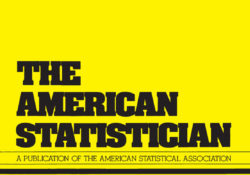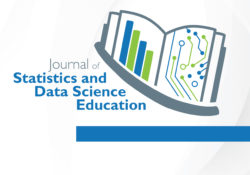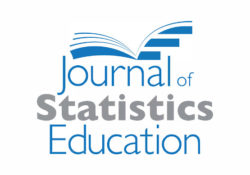eric.ed.gov har udgivet: The emergence of technology has led to numerous changes in mathematical and statistical teaching and learning which has improved the quality of instruction and teacher/student interactions. The teaching of statistics, for example, has shifted from mathematical calculations to higher level cognitive abilities such as reasoning, interpretation, and evaluation (Ben-Zvi, 2000). Visualization is one such technological tool and can be defined as the graphical display of information. The benefit of this approach is in providing the viewer with a visual means of processing information (Segenchuk, 1997). Since the 1980’s, graphical aids have been viewed as an innovative strategy in education, especially for math or science related subjects. The purpose of this study is to investigate the use of Flash applets on Pocket PCs in statistics education, specifically in… Continue Reading →
Like this:
Like Loading...
tandfonline.com har udgivet en rapport under søgningen „Teacher Education Mathematics‟: Abstract Formulae display:?Mathematical formulae have been encoded as MathML and are displayed in this HTML version using MathJax in order to improve their display. Uncheck the box to turn MathJax off. This feature requires Javascript. Click on a formula to zoom. The purpose of this paper is to follow the reasoning of high school students when asked to explain the standard trigonometric limit limθ→0sinθθ=1. An observational study was conducted in four different phases in order to investigate if visualization, by means of an interactive technology environment (Geogebra), can contribute in lifting high school students’ understanding from a mere procedural understanding to a combination of conceptual and procedural understanding. The obtained results confirm that the students were able to show a… Continue Reading →
Like this:
Like Loading...
tandfonline.com har udgivet en rapport under søgningen „Teacher Education Mathematics‟: Link til kilde
Like this:
Like Loading...
eric.ed.gov har udgivet: Jordanian 8th grade students revealed low achievement in mathematics through four periods (1999, 2003, 2007 & 2011) of Trends in International Mathematics and Science Study (TIMSS). This study aimed to determine whether spatial visualization mediates the affect of Mathematics Learning Strategies (MLS) factors namely mathematics attitude, mathematics motivation, mathematics self-regulation, mathematics self-efficacy, and mathematics anxiety on mathematics achievement. The study consists of 360 students from public middle schools in Alkoura district, selected through stratified random sampling. It employed 65 items to assess MLS, which consists, attitude (18 items), motivation (7 items), self-regulation (25 items), self-efficacy (5 items) and math anxiety (10 items). The mathematics test comprises of 30 items, which has eight items for numbers, 14 items for algebra and eight items for geometry while spatial visualization… Continue Reading →
Like this:
Like Loading...
tandfonline.com har udgivet en rapport under søgningen „Teacher Education Mathematics‟: ABSTRACT ABSTRACT We discuss the learning goals, content, and delivery of a University of Plymouth intensive module delivered over four weeks entitled MATH1608PP Understanding Big Data from Social Networks, aimed at introducing students to a broad range of techniques used in modern Data Science. This module made use of R, accessed through RStudio, and some popular R packages. After describing initial examples used to fire student enthusiasm, we explain our approach to teaching data visualization using the ggplot2 package. We discuss other module topics, including basic statistical inference, data manipulation with dplyr and tidyr, data bases and SQL, social media sentiment analysis, Likert-type data, reproducible research using RMarkdown, dimension reduction and clustering, and parallel R. We present four lesson outlines… Continue Reading →
Like this:
Like Loading...
tandfonline.com har udgivet en rapport under søgningen „Teacher Education Mathematics‟: ABSTRACT ABSTRACT “Data science” is a useful catchword for methods and concepts original to the field of statistics, but typically being applied to large, multivariate, observational records. Such datasets call for techniques not often part of an introduction to statistics: modeling, consideration of covariates, sophisticated visualization, and causal reasoning. This article re-imagines introductory statistics as an introduction to data science and proposes a sequence of 10 blocks that together compose a suitable course for extracting information from contemporary data. Recent extensions to the mosaic packages for R together with tools from the “tidyverse” provide a concise and readable notation for wrangling, visualization, model-building, and model interpretation: the fundamental computational tasks of data science. Link til kilde
Like this:
Like Loading...
tandfonline.com har udgivet en rapport under søgningen „Teacher Education Mathematics‟: Abstract Abstract Although the use of tables, graphs, and figures to summarize information has long existed, the advent of the big data era and improved computing power has brought renewed attention to the field of data visualization. As such, it is crucial that introductory statistics courses train students to become critical authors and consumers of data visualizations. To that end, we have developed a semester-long, instructor-supported, group project that exposes students to this growing field. We have found this project to be an exciting and effective way to teach students the power of statistics and, more importantly, the critical role context plays when interpreting statistics. Among the many benefits of this project are hands-on learning, improved mathematical reasoning, and better… Continue Reading →
Like this:
Like Loading...




